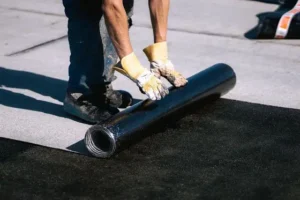In recent years, sustainability has become a critical factor in construction and home improvement materials. Waterproof coatings, traditionally seen as purely functional, are now being evaluated through the lens of environmental impact. But what exactly makes a waterproof coating eco-friendly, and how can the industry innovate for a greener future?
Most conventional waterproof coatings rely on synthetic chemicals, solvents, and non-renewable resources. These materials, while effective at repelling water, often release volatile organic compounds (VOCs) during application and curing, contributing to air pollution and potential health risks for workers and occupants.
Thankfully, manufacturers are developing next-generation waterproof coatings with bio-based polymers, water-based formulas, and low-VOC content. These bio-based polymers reduce harmful emissions, improve indoor air quality, and minimize ecological footprint. For example, coatings made from natural oils or recycled materials demonstrate comparable durability without sacrificing environmental responsibility.
Choosing sustainable waterproof coatings also supports the circular economy by promoting reuse and reducing waste. Some innovative products are even designed for easier removal and recycling, avoiding the landfill accumulation typical with traditional sealants.
As consumers and builders become more conscious of their ecological footprint, waterproof coatings are evolving beyond mere water protection. They represent a meaningful step toward sustainable construction, marrying performance with planet-friendly innovation.

Contact Us
For more information or to inquire about our waterproof floor paint solutions, feel free to get in touch with us. We’re here to help!
- Phone: +86 138 6365 6701
- Email: Huafengwaterproof@gmail.com
- WhatsApp: +86 138 6365 6701
We look forward to assisting you with all your waterproofing needs!






